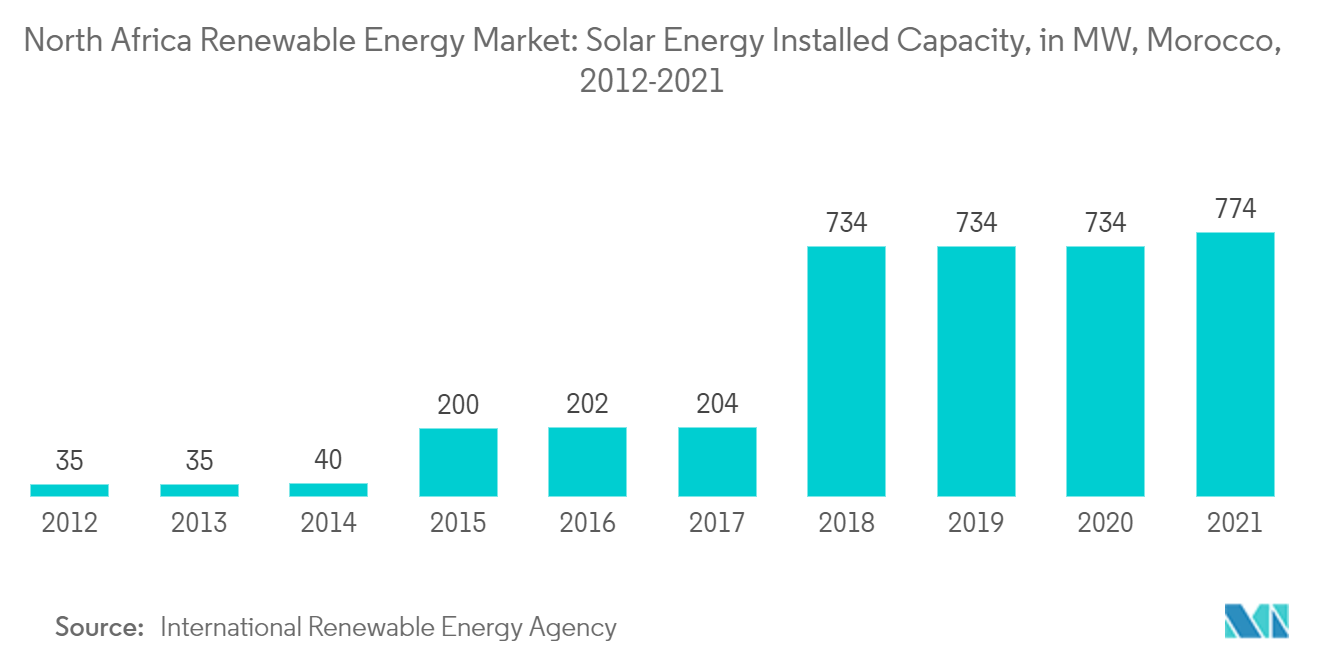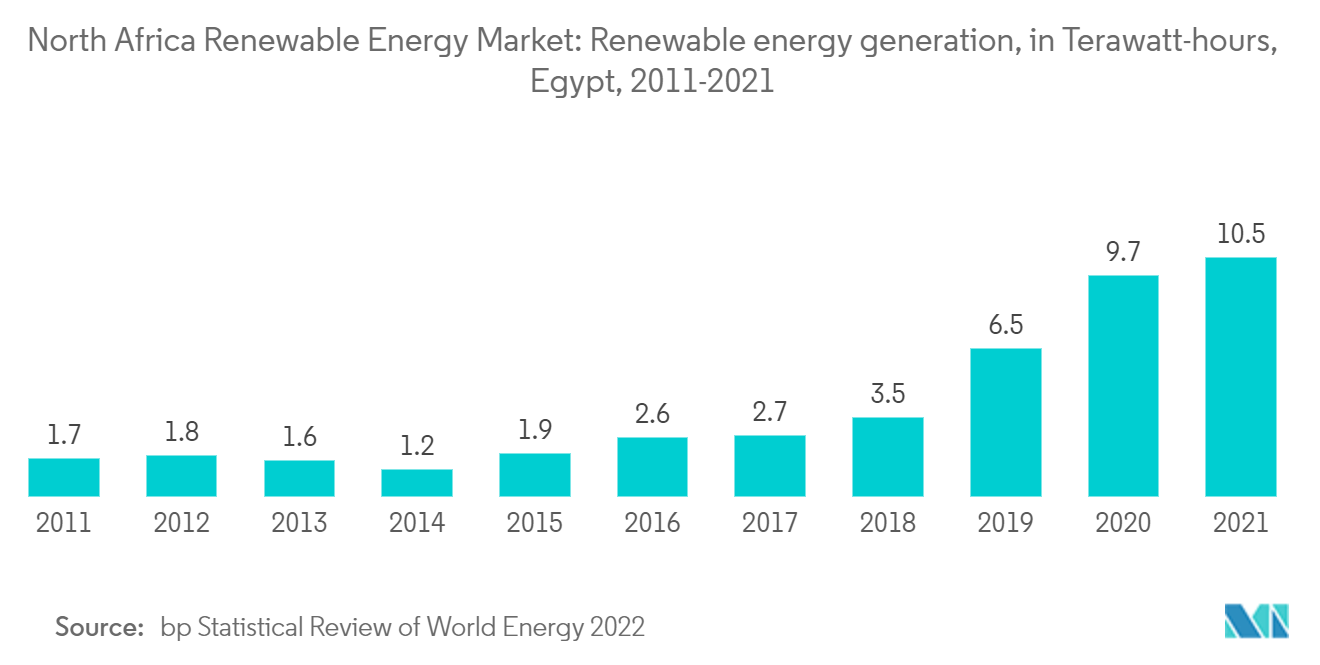Market Trends of North Africa Renewable Energy Industry
This section covers the major market trends shaping the North Africa Renewable Energy Market according to our research experts:
Solar Energy is Expected to Dominate the Market
- The ambitious targets for renewable energy development will expand the segment in North Africa. For example, Morocco aims to produce 52% of its electricity from renewables by 2030. Egypt has a 42% renewable electricity target for 2035. The country also hosted UN Climate Summit, COP27, at Sharm El Sheikh in 2022, where discussions on raising ambition on clean energy and climate adaptation were the central point. In 2021, Morocco's cumulative solar energy capacity reached 774 MW. This will give a significant push, particularly to the renewable energy segment in North Africa.
- Algeria is foreseeing becoming a global competitor in the renewables space with a plan to deploy 22 GW of clean energy by 2030. Whereas, Libya is Libya is planning to accomplish 22% renewable electricity generation by 2030 and has around 2.2 GW of solar projects under the planning phase. Tunisia has set a 30% renewable electricity target for 2030. The country's individual targets provide an opportunity for scaling up solar energy
- According to IRENA, Renewables portray 34% of expected power sector investments across the Middle East and North Africa until 2023, in which North Africa alone represents more than half of assets. In 2022, Asian Infrastructure Investment Bank (AIIB) inked an agreement with the government of Egypt to invest USD 10 Billion to install 10GW of solar and wind by 2028 for a program named Nexus on Water, Food, and Energy.
- In April 2022, The Moroccan Agency for Solar Energy (Masen) and the Ministry of Energy Transition and Sustainable Development announced the launch of phase one of the Nor II solar energy project, a multi-site project with a total capacity of 400 megawatts.
- Owing to several ambitious renewable energy targets and investments in projects in different nations, solar energy is expected to dominate the market in the forecast period.

Egypt to Dominate the Market
- Egypt possesses phenomenal geography as it has abundant land, sunny weather, and high wind speeds, making it a prime location for renewable energy projects.
- Under Integrated Sustainable Energy Strategy 2035, Egypt aims to generate 20% of its electricity from renewable by 2022 and 42% by 3035. According to this strategy, 61000 MW of renewable capacity, including 31,000 MW from solar, 12,000 from CSP, and 18,000 MW from wind energy, will be installed by 2035.
- On the same note, considering the more optimistic plan, the government is considering revising the program and is currently being revised and waiting for the approval of the supreme council for energy to add 33 per cent of the power generated from renewable energy by 2025, 48 per cent by 2030, 55 per cent by 2035, and 61 per cent by 2040.
- In 2022, the cumulative renewable installed capacity in Egypt was 6.8 GW. The country aims to expand renewable power to 10 GW by the end of 2023. In recent years, electricity generation by renewable energy sources has increased and reached 10.5 TWh in 2021
- According to the Wind and Solar Atlas, the East and West Nile areas of Egypt have the potential to produce around 31,150 MW of wind power and 52,300 MW of solar. Currently, Egypt is looking for financing options to conduct feasibility studies for a Solar-thermal power plant using CSP technology and designing a technical-financial mechanism to promote the use of solar water heaters in Egypt's residential sector.
- The bold steps and academic policies of the Egyptian government are expected to drive Egypt towards becoming a renewable leader in North Africa, making it possible to achieve the renewable goal of 2035.


